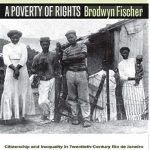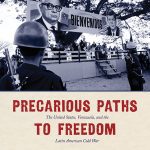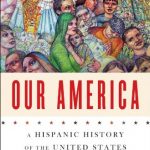For Tijuanenses, the sight of the Agua Caliente entertainment complex conjures up images of two distinct things. The first: dogs. The Tijuana racetrack is home to nearly 700 galgos, Spanish greyhounds that race almost daily. Adjacent to the track is the multi-use Estadio Caliente, the home turf of Club Tijuana Xoloitzcuintles de Caliente, currently situated in the top-flight of Mexican professional soccer. The Xolos take their name from the sacred Aztec canine—a hairless, netherworldly little breed, albeit a quite congenial one. The second: Jorge Hank Rhon, Tijuana’s Trumpian ex-mayor (2004-2007). Born to a father with one foot firmly planted in politics and the other in business, Hank leveraged his family’s name to facilitate his acquisition of the Agua Caliente grounds in 1985 and subsequently founded Grupo Caliente, Mexico’s largest gambling company. He rapidly developed a penchant for snorting cocaine (inspiring one local columnist to dub him the “Abominable Snowman”), exotic animal trading, sporting a ridiculous mane, and fraternizing with associates of the Arellano-Felix Cartel. In time, credible accusations of money laundering, arms- and drug-trafficking, and homicide were levied against Hank and his partners, with one U.S. intelligence report asserting that his family represented “a significant criminal threat to the United States.”
But Agua Caliente’s unsavory history predates Hank’s tenure by several decades. In Satan’s Playground, Paul Vanderwood (UT History Ph.D., 1970), puts Jazz Age Tijuana on full display through the prism of the legendary tourist center. Founded in 1928, Agua Caliente was designed in an incoherent fusion of Old War styles and featured palatial amenities mimicking those of European vacation spots like Deauville and Monte Carlo. While most northern Mexican establishments attracted a heterogeneous clientele seeking respite from the puritanism of Prohibition-era America, Agua Caliente catered to a subset of moneyed elites who thirsted for the most upscale diversions. A year after its opening, a reporter for the Los Angeles Times toured the casino’s Salón de oro (Gold Room) where it was rumored that gamblers could only wager with gold chips, and later surmised that “there isn’t another place on the continent, outside of a U.S. mint, where you can see so much money piled up before your eyes at one time.” (Sept 8, 1929). The resort’s iconic racetrack, the site of several industry firsts, was graced by the presence of the finest thoroughbreds, most notably the fabled Seabiscuit. If betting on horse racing was insufficiently thrilling, one could place money on the bare-knuckled boxer most favored to remain vertical. And for those aching after a long night of carousing, several Turkish baths were available to sweat away what ailed them.
After an informative tour d’horizon of Baja California’s modern sociopolitical and economic history, Vanderwood proceeds to explain how Agua Caliente came to be. He traces the resort’s origins to the military man-cum-Governor of Baja California, Abelardo Rodríguez, who, along with 3 snake oil salesmen from the U.S., collectively dubbed the Border Barons, endeavored to capitalize on the dry laws and gaming restrictions imposed on the major metropolises of southern California. In 1927, having convinced his overseers in Mexico City of Agua Caliente’s economic potential, Rodríguez obtained a development deal, purchased a large plot of land near a natural hot springs (thus the name “Agua Caliente”) from its unwary owner, and used taxpayer money to construct and outfit the enterprise.
Born of a crime, Agua Caliente remained a magnet for illicit activities until its premature closing in 1937. The book’s chapters are studded with concise accounts detailing onsite murders, fixed games, and abductions, such as the 1932 kidnapping of Zeke Caress, commissioner of the racetrack and degenerate gambler, by Chicago’s Sheldon Gang. Al Capone and Bugsy Siegel, both resort regulars, also make cameos. Siegel was so taken by Agua Caliente that he cited it as his inspiration for Las Vegas’ pioneering Flamingo Club, although the visionary behind it was actually Billy Wilkerson, an L.A.-based nightclub owner and founder of The Hollywood Reporter.
One crime in particular takes center stage in Vanderwood’s treatment of the topic. In 1929, two gunmen with possible mob ties assaulted a car transporting revenues from the resort to a San Diego bank, resulting in the death of the courier and accompanying guard. With the aid of judicial files, newspaper reports, and detective magazines, the author stalked the perpetrators across southern California where they were summarily captured and prosecuted. Using cases like the Dike Robbery, as this one came to be known, Vanderwood discusses the rise of organized crime on the West Coast and the press’ unblinking eye. “Have established East Coast and Midwestern syndicates infiltrated California and Baja? Are Tijuana and Agua Caliente to blame?” Questions like these preoccupied a simultaneously frightened and fascinated news media. Several articles on the botched heist focused on the thieves’ use of Thompson submachine guns. Some fixated on the details of the criminal performance while others loudly anticipated today’s debates. In the wake of Chicago’s St. Valentine’s Day Massacre four months before, mainstream opinion-makers doubled down on their stance that firearms of such devastating power should never be permitted in civilian hands. Unsurprisingly, the specter of violent, “professional” crime did not sully the resort’s image. On the contrary, the gangland presence fueled Agua Caliente’s allure. The Border Barons, often the victims of threats and extortion attempts, embraced the notoriety.
The majority of the recognizable faces populating the complex, however, did not belong to gangsters. Agua Caliente absorbed waves of Hollywood royalty in its heyday. On a weeknight, the likes of Charlie Chaplin, Gloria Swanson, Clark Gable, and Bing Crosby could be sighted sipping Sazeracs while wagering their fortunes. At least one young talent was discovered there—Margarita Cansino, a lounge dancer who later achieved stardom under the stage name “Rita Hayworth.” But far more numerous were the would-be actors and actresses desperate to quit their day jobs, the call girls looking for a career change or a more distinguished client list, and the producers hunting for the next big cash cow or casting couch conquest.
As far as President Lázaro Cárdenas was concerned, establishments like Agua Caliente absolutely merited the epithet “Satan’s Playground.” In July 1935, a year and a half after the repeal of Prohibition, he ordered the region’s casinos closed, and two years later decreed that the rest of the Agua Caliente estate be expropriated and turned into an industrial trade school. Labor arbiters denied severance packages to the laid off workers of Tijuana’s largest employer. The Border Barons, on the other hand, fared much better and emerged from this ordeal with their robust bank balances intact.
It is a shame that a deeper investigation into the last 30 years of Agua Caliente’s history, featuring Hank and company at the helm, will not be possible until these parties have long expired. But Vanderwood’s book makes for an exceptional first installment. Satan’s Playground offers more than a good story about a lurid vacation spot in a permissive border city. Figuring prominently are analyses of the evolution of transnational organized crime, border politics, capitalism, and the booms and busts of Tijuana’s vice-tourism industry. Anyone drawn to these topics will find plenty of stimulating material. Those with only a passing interest will nonetheless encounter a riveting read in this enviably written blend of social history and “true crime.”




